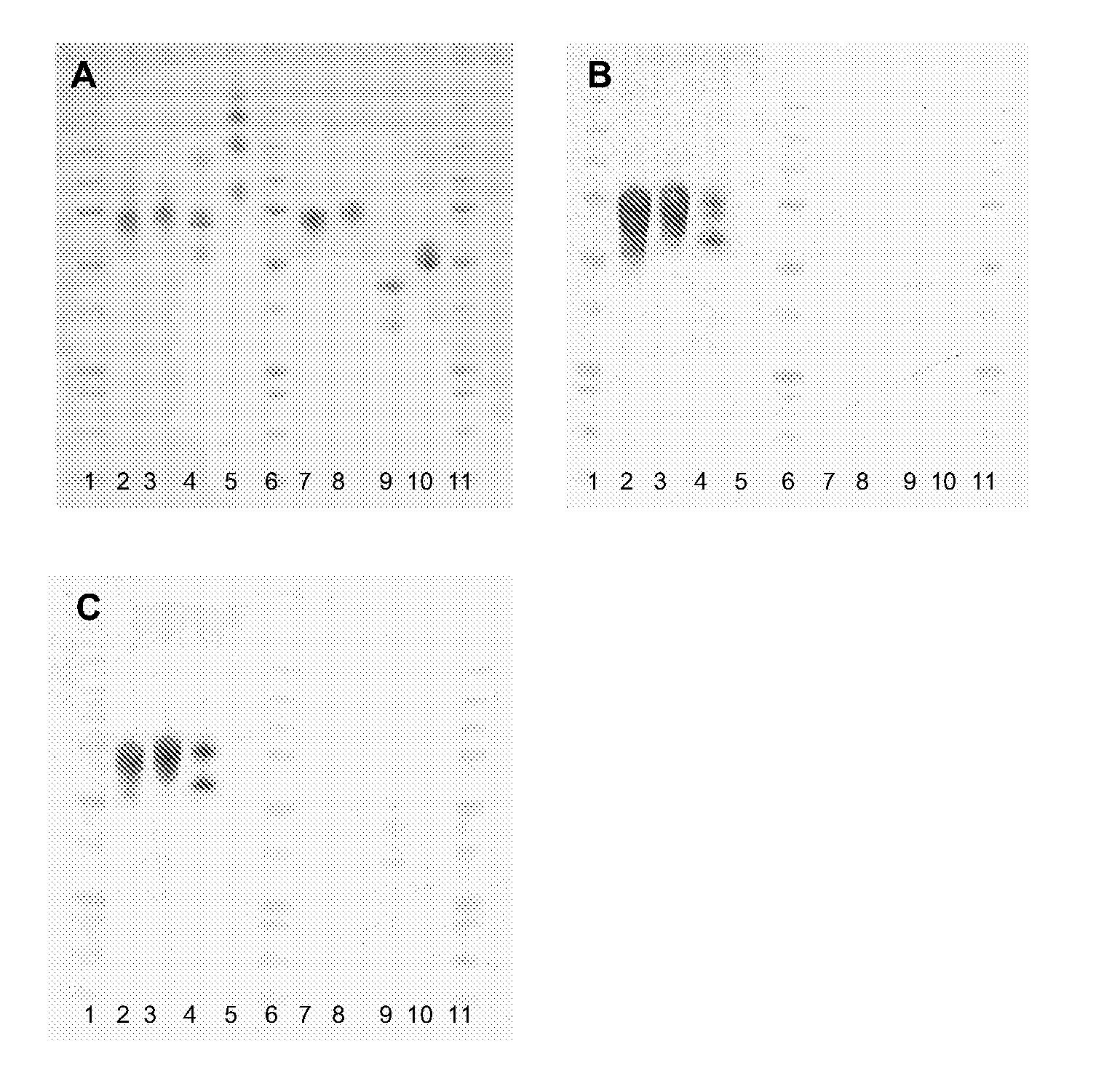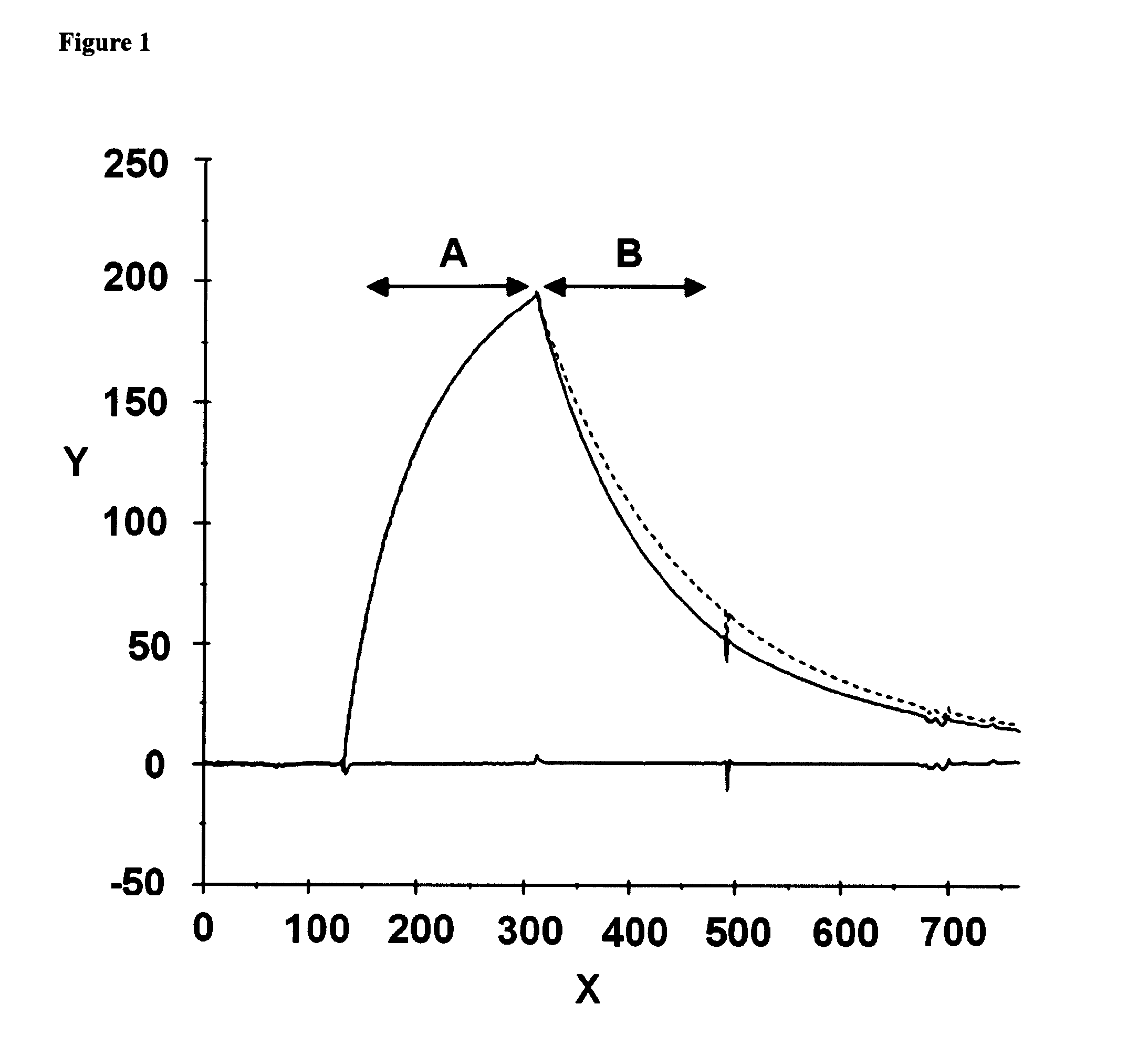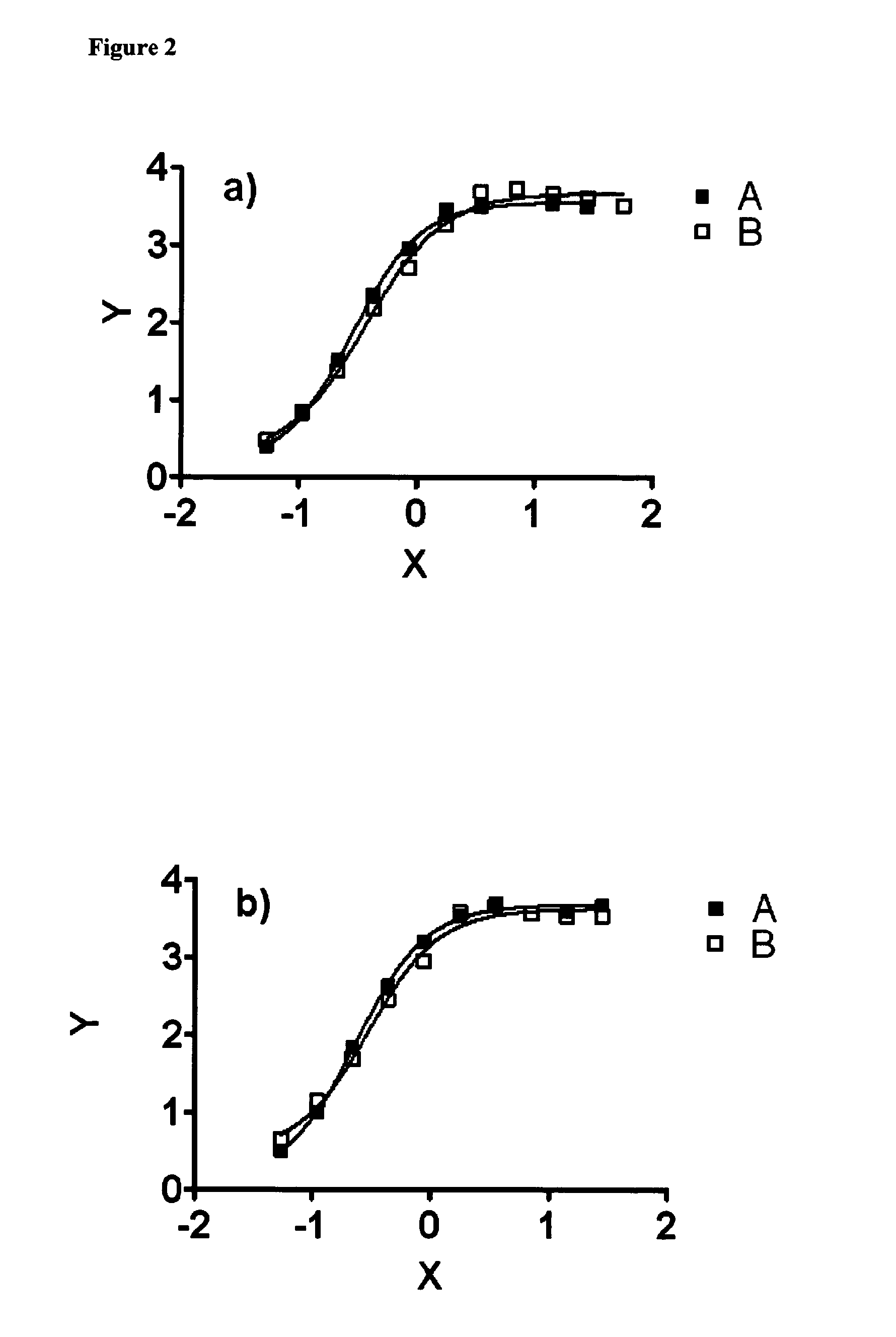Anti-c4.4a antibodies and uses thereof
a technology of anti-c4.4a and antibodies, applied in the field of anti-c4.4a antibodies, can solve the problems of reducing unspecific binding to normal tissue, dose-limiting toxicity, or reducing therapeutic potency, and achieve the effect of increasing efficacy
- Summary
- Abstract
- Description
- Claims
- Application Information
AI Technical Summary
Benefits of technology
Problems solved by technology
Method used
Image
Examples
example 1
Antibody Generation from n-CoDeR Libraries
[0289]The isolation of human antibodies against C4.4a was performed by phage display technology employing the naive antibody library n-CoDeR of Bioinvent International AB (Lund, Sweden; described in Söderling et al., Nature Biotech. 2000, 18:853-856) in a cell selection approach. n-CoDeR is a Fab library in which all six CDRs are diversified. CDR sequences were initially obtained from healthy human donors.
[0290]Briefly, an aliquot of the Fab antibody library was depleted for unwanted surface binders by pre-incubation with 107 non-C4.4a expressing parental CHO-S cells in PBS / 3% FCS / 0.01% NaN3 (buffer A) at 4° C. by end-over-end rotation for 15 min. After that cells were removed by centrifugation, the supernatant was used for 2 additional rounds of pre-incubation on CHO-S cells. Sub sequential panning on target cells (107 CHO-S:hC4.4a cells) was done by incubation with the phage preparation for 45 min at 4° C. in buffer A followed by 10 times ...
example 2
Epitope Grouping
[0295]Epitope grouping experiments were performed using surface plasmon resonance analysis on a Biacore T100 instrument (GE Healthcare Biacore, Inc.) by monitoring simultaneous binding of pairs of anti-C4.4a antibodies to C4.4a. All following steps were performed at 20° C. Approximately 2000 RU (one RU (resonance unit) represents the binding of 1 pg of protein per square mm) of the first antibody was covalently immobilized onto a CM5 sensor chip through primary amine coupling. The chip was activated with an 1:1 ration of 0.4 M N-ethyl-N-(3-diethylaminopropyl) carbodiimide (EDC) and 0.1 M n-hydroxysuccinamide (NHC) at a flow rate of 10 μl / min for 5-15 min. Unoccupied binding sites on the surface were then blocked with an excess of 1 M ethanolamine pH 8.5. Soluble C4.4a (concentration of 400 nM in HEPES-EP buffer (GE Healthcare Biacore, Inc.) at a flow rate of 10 μl / min for 3 minutes) was captured on the surface via the immobilized antibody. Therefore, the epitope of t...
example 3
Cross-Reactivity to Murine C4.4a
[0297]Shown in Table 1 are results of Biacore and studies showing cross-reactivity and dissociation constants (KD) of antibodies of the invention to murine C4.4a.
[0298]Binding affinities of anti C4.4 antibodies were determined by surface plasmon resonance analysis on a Biacore T100 instrument (GE Healthcare Biacore, Inc.). Antibodies were immobilized onto a CM5 sensor chip through an indirect capturing reagent, anti-human IgG Fc. Reagents from the “Human Antibody Capture Kit” (BR-1008-39, GE Healthcare Biacore, Inc.) were used as described by the manufacturer. Approximately 5000 RU monoclonal mouse anti-human IgG (Fc) antibody were immobilized per cell. Anti C4.4 antibodies were injected at a concentration of 5 μg / ml at 10 μl / min for 10 sec to reach a capturing level of approximately 200 to 600 RU. Various concentrations (400 nM, 200 nM, 100 nM, 50 nM, 25 nM, 12.5 nM, 6.25 nM, and 3.12 nM) in HEPES-EP buffer (GE Healthcare Biacore, Inc.) of human or m...
PUM
| Property | Measurement | Unit |
|---|---|---|
| time | aaaaa | aaaaa |
| time | aaaaa | aaaaa |
| time | aaaaa | aaaaa |
Abstract
Description
Claims
Application Information
 Login to View More
Login to View More - R&D
- Intellectual Property
- Life Sciences
- Materials
- Tech Scout
- Unparalleled Data Quality
- Higher Quality Content
- 60% Fewer Hallucinations
Browse by: Latest US Patents, China's latest patents, Technical Efficacy Thesaurus, Application Domain, Technology Topic, Popular Technical Reports.
© 2025 PatSnap. All rights reserved.Legal|Privacy policy|Modern Slavery Act Transparency Statement|Sitemap|About US| Contact US: help@patsnap.com



